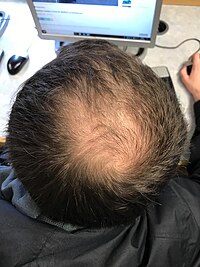
Photo from wikipedia
Dermal denticles cover the skin of sharks for protection and may have additional functions, depending on the environment. The aim of the present study was to analyze the morphological pattern… Click to show full abstract
Dermal denticles cover the skin of sharks for protection and may have additional functions, depending on the environment. The aim of the present study was to analyze the morphological pattern of dermal denticles across the body of the poorly known deep‐water catshark Galeus mincaronei, which is endemic to Southern Brazil. Additionally, we aimed to identify differences between sexes and stages of sexual maturity. For this purpose, we analyzed patches of eight skin samples from body regions, that is, the head, body, and tail. Dermal denticles were imaged using scanning electron microscopy. Measurements of crown morphological variations (length and width) and density of dermal denticles were performed. Nine characters of dermal denticle morphology were selected to describe a morphological pattern using principal component analysis (PCA). The first PCA axis explained 45.2% of the variation, the second explained 33%, and the third explained 14.3%, together explaining 92.5% of the total variation in denticle morphology. We identified three groups of dermal denticle crown morphologies and their possible functions. The first was composed of nostril and snout denticles, which might suggest abrasion strength functions; the second was composed of most body denticles, such as those in the cranium, on the left side of the body, and on the pectoral, dorsal, and caudal fins, which might be related to generalized functions; and the third was composed of only caudal crest denticles, which might indicate defense functions with hydrodynamic properties in G. mincaronei. Likewise, our results reveal variations in dermal denticle morphology and arrangement along the three maturity stages considered in both sexes. Similarly, sexual dimorphism in the crown width and morphology of dermal denticles was observed in developing and mature individuals. Our results are the first to reveal the morphological variation of dermal denticles in relation to function, sex, and ontogeny of individual G. mincaronei.
Journal Title: Journal of Morphology
Year Published: 2022
Link to full text (if available)
Share on Social Media: Sign Up to like & get
recommendations!